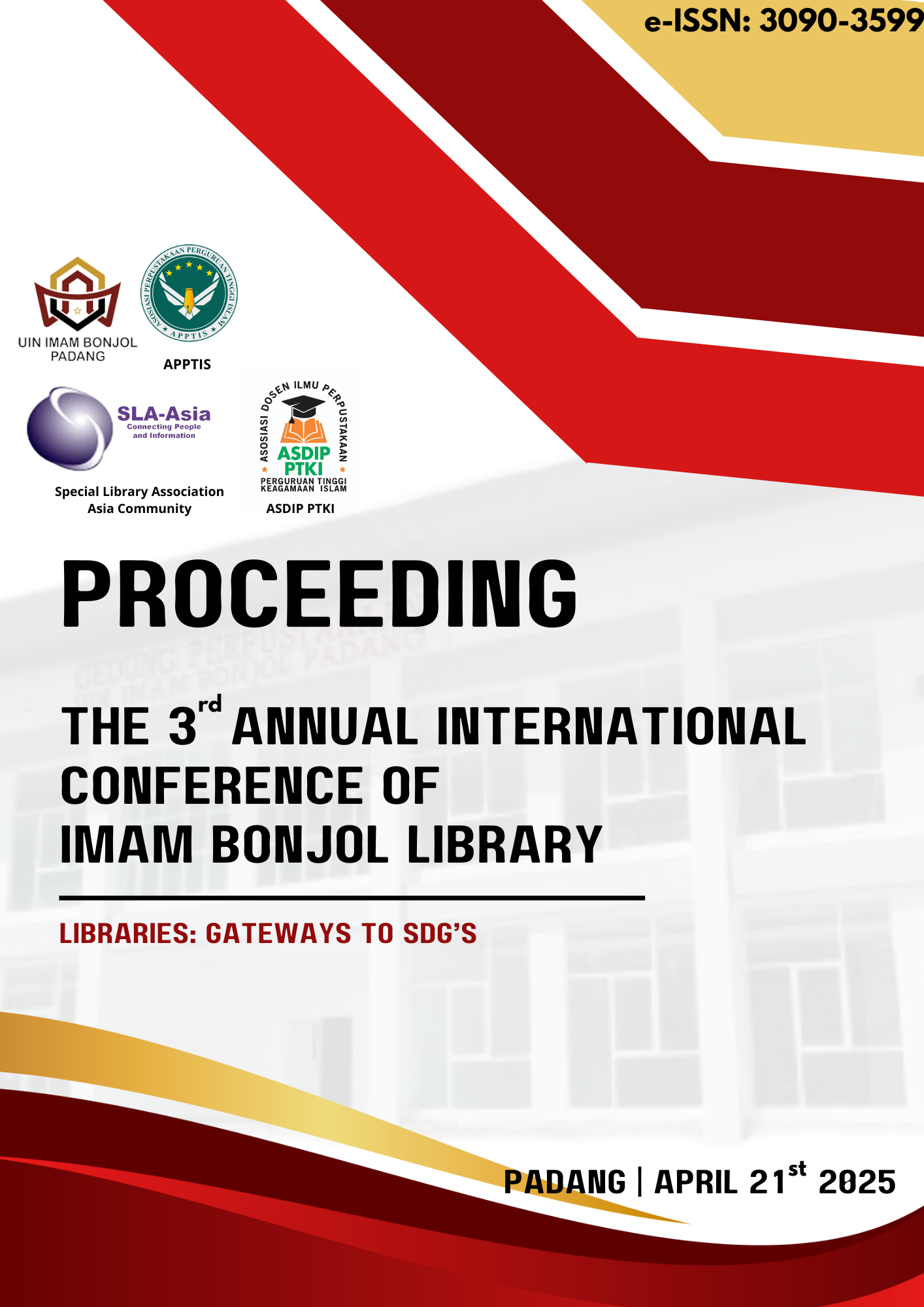Optimizing the Role of Islamic Higher Education Libraries in the Era of Technology 5.0
Keywords:
digital libraries, artificial intelligence, social inclusion, technology 5.0, islamic higher educationAbstract
Background of the study: The rapid advancement of Technology 5.0 has had a significant impact on higher education, particularly in optimizing digital library services in Islamic universities. This research explores the role of digitization in improving information accessibility and social inclusion, focusing on the challenges and opportunities in implementing digital libraries.
Purpose: The main objective is to analyze key barriers such as infrastructure limitations, digital literacy gaps, and policy constraints and evaluate the integration of Artificial Intelligence (AI) to improve user experience
Method: Using a literature review approach, data was collected through a review of selected literature
Findings: Findings show that AI-powered tools, including chatbots and recommendation systems, improve service efficiency and accessibility for disadvantaged groups, including people with disabilities and those from low-income backgrounds. In addition, digital transformation in libraries promotes academic engagement and lifelong learning.
Conclusion: The study concludes that strengthening digital infrastructure, implementing inclusive policies, and improving librarians' competencies in AI-based services are essential to optimize library functions. Collaboration between the government, universities and society is essential to ensure sustainable and adaptive digital transformation in Islamic higher education.





